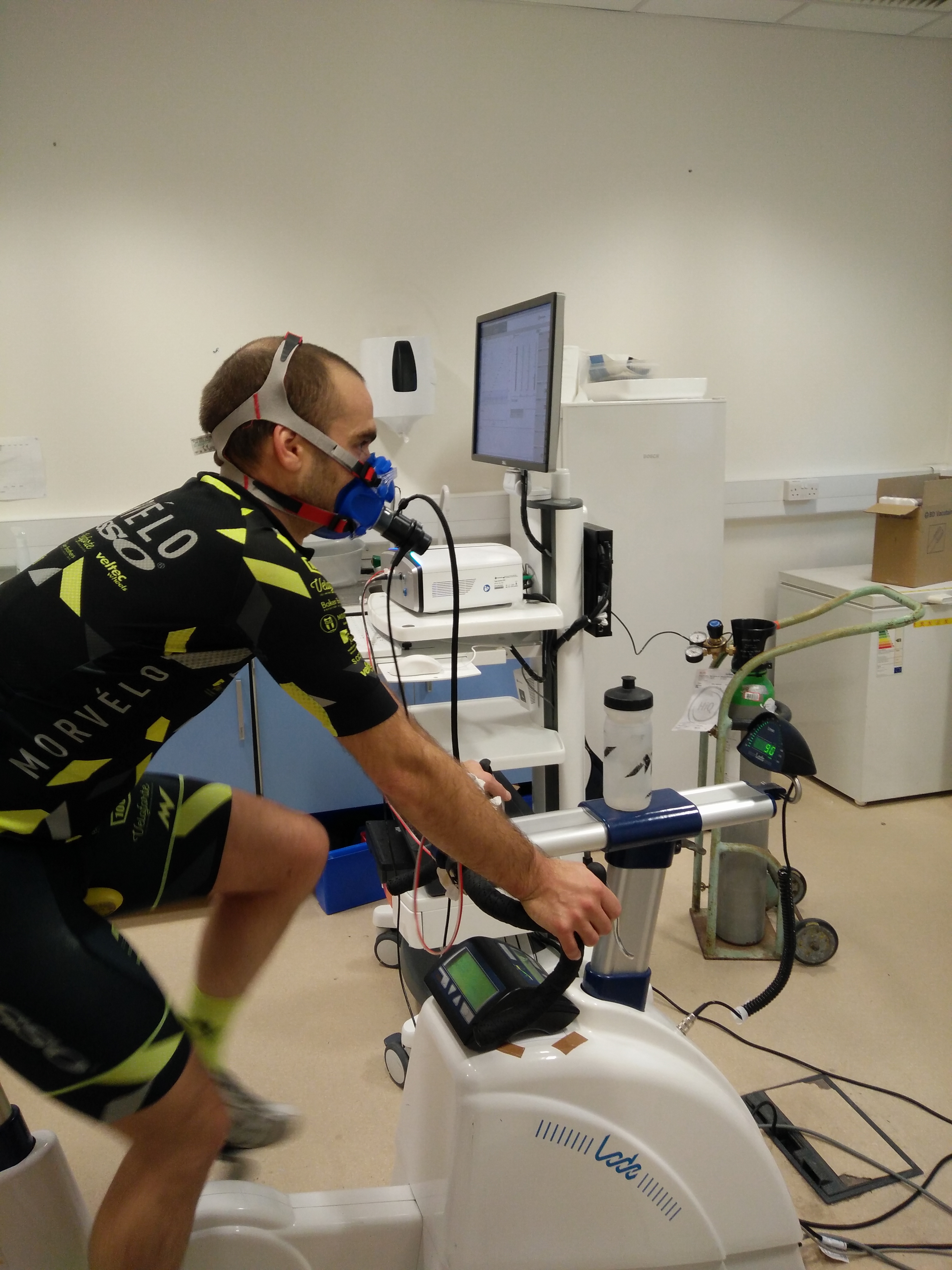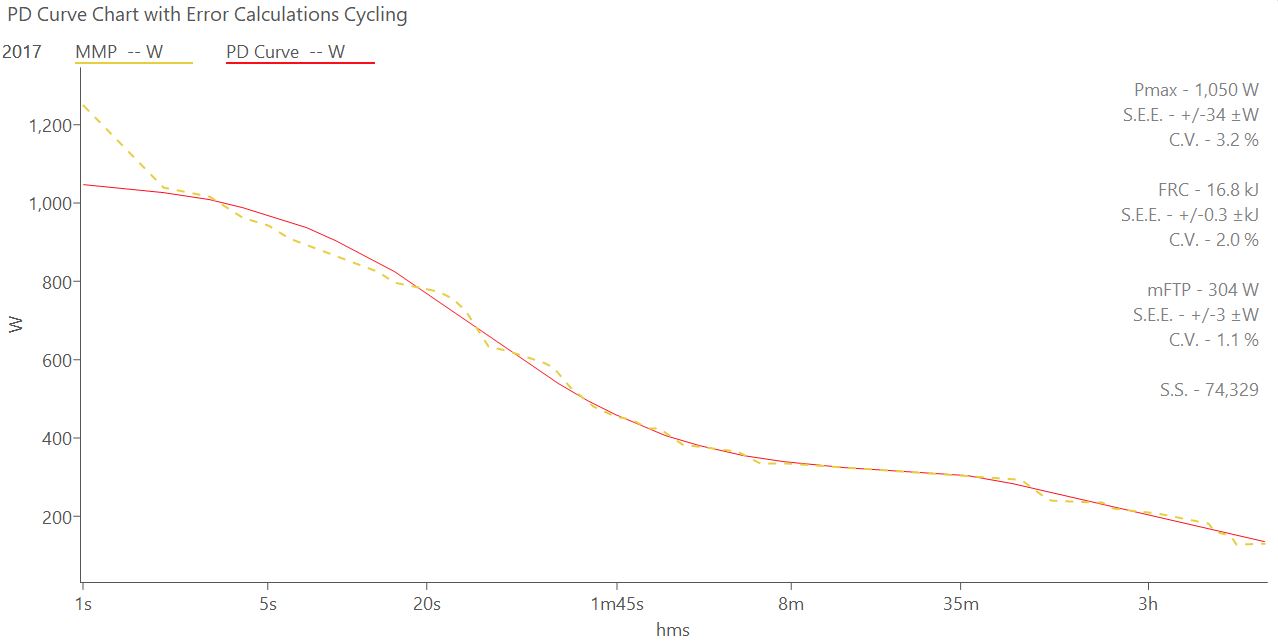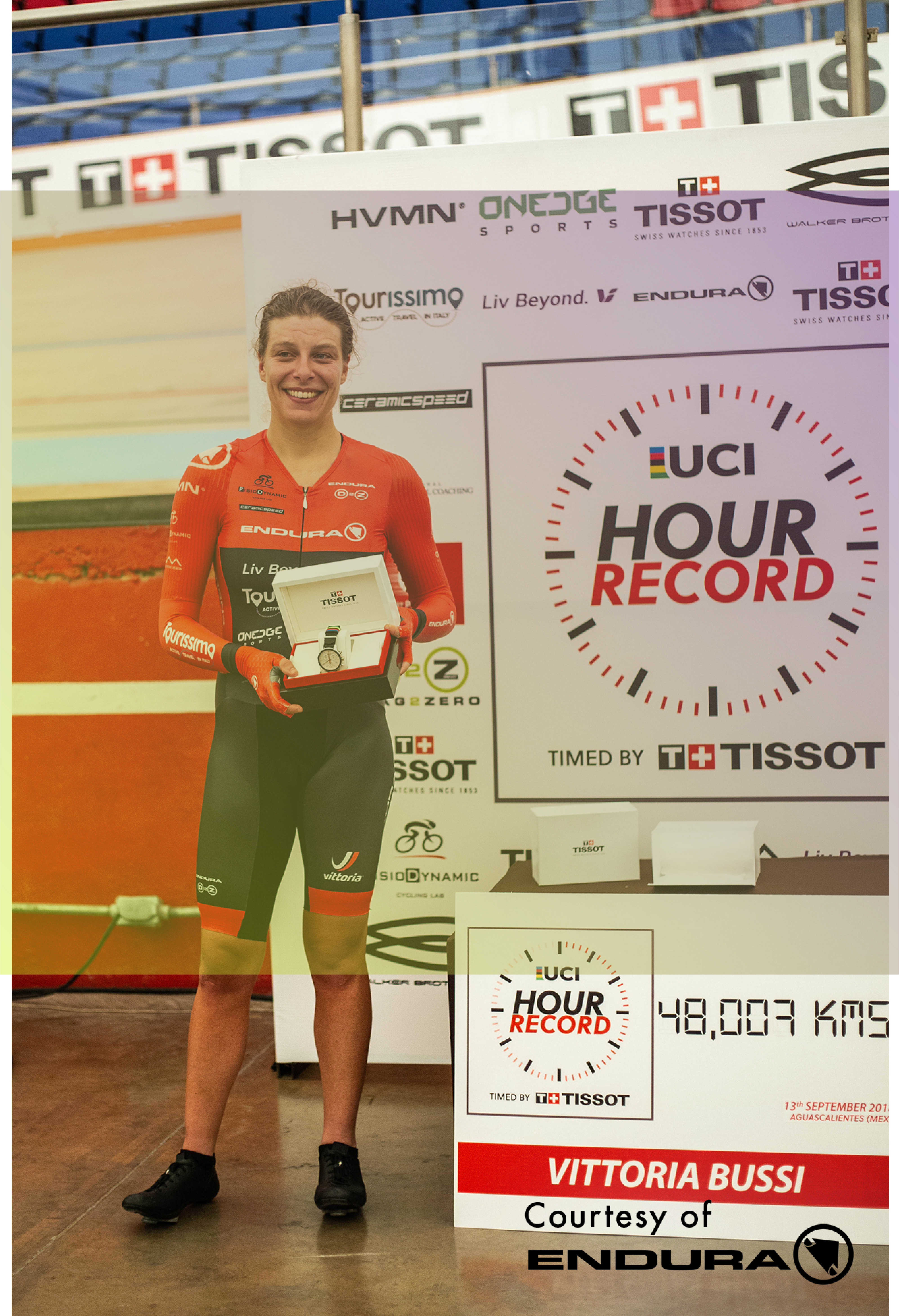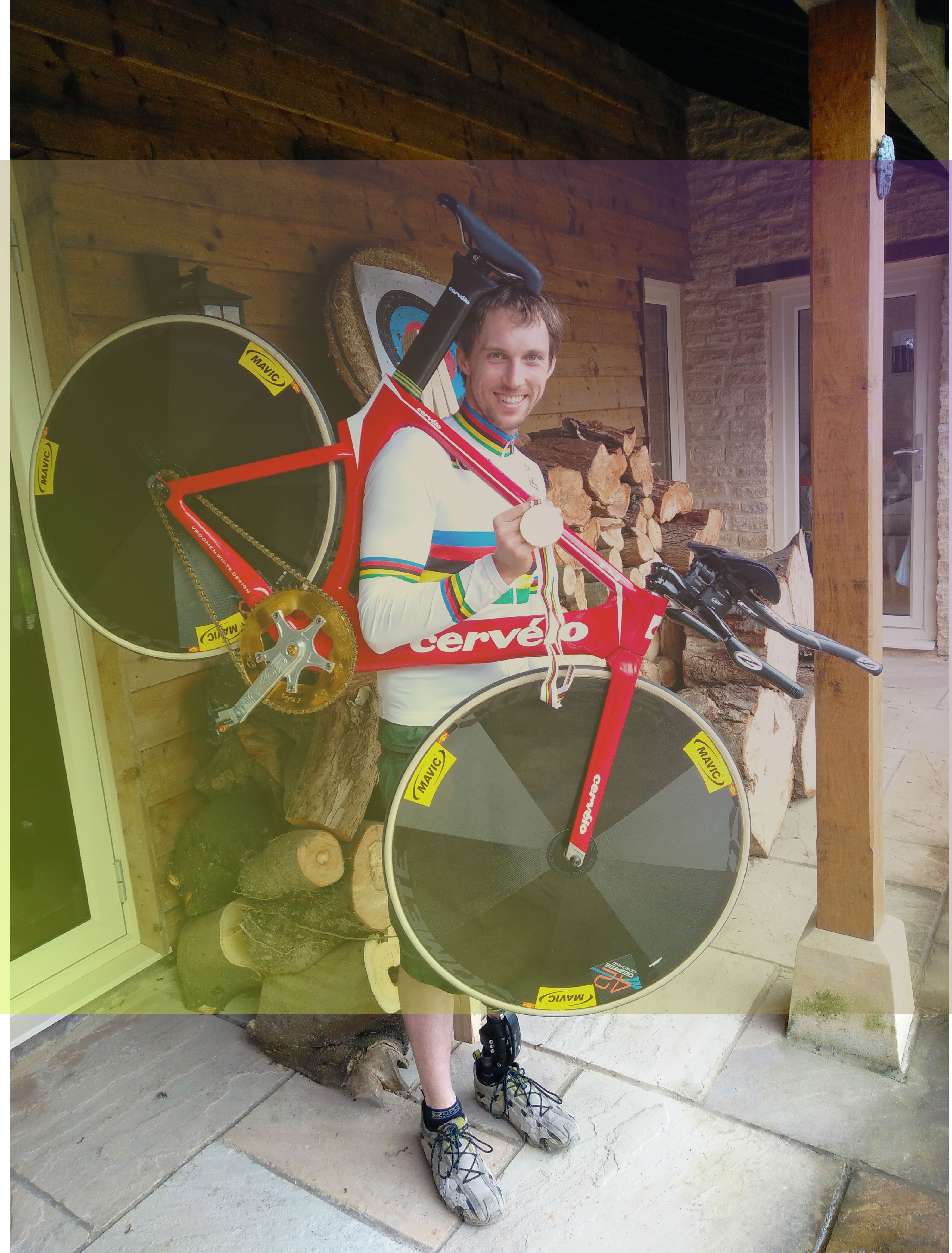over other durations. This is very useful for training prescription as well as, for example, pacing in a time trial race. Some analysis software, such as the Trainingpeaks WKO5 software we use, uses this concept to construct a power-duration curve (see picture) showing an athlete's predicted best power calculated from their best Maximal Mean Power output (MMP) achieved in racing, training and testing over a defined period. This is a very useful tool as long as an athlete has recent maximal efforts over a variety of durations, and can also indicate when would be a good time to include some more formal testing either in the lab or using the Critical Power model. The best combination could be submaximal testing in a lab to establish training zones below the Critical Power, alongside field-based Critical Power testing to fine-tune high intensity interval prescription.
Where
next?
In
recent years the level of understanding of power-based metrics has
been driven by the concept of FTP, and various measures derived from
it. Training Stress Score (TSS) for example attempts to integrate
intensity and duration to compare the overall difficulty of training
sessions that on their own might be very different, for example an
hour-long interval session versus a 6-hour endurance ride. This is
based on a one-hour effort at FTP intensity being worth a score of
100 TSS. A longer, less intense session such as 2-hours at the upper
end of zone 2 might rack up the same TSS points but the physiological
effects and recovery required will be markedly different between
those two sessions. A
more useful metric might integrate intensity, duration and other
factors such as your recent training history and recovery (monitoring sleep and HRV?) or maybe fuel depletion, core body
temperature or stress hormone levels using newly available
non-invasive monitors, if they prove reliable, for a more complete picture.
Mass
data analysis and machine learning could reveal relationships between
training and cycling performance on a mass scale given the huge
amounts of data stored on platforms such as Strava. What had a
rider been doing in the hours, days and weeks before taking that KOM?
And would it work for everyone? A smaller scale example of this is
the work of Dr. Stephen Seiler and the concept of Polarized Training.
In the first part of this article we discussed setting training zones
based upon either a single anchor point such as FTP or on
physiological variables such as Lactate thresholds. In his review article Dr. Seiler used blood lactate markers to define three Heart Rate
based training 'domains' in elite endurance athletes. The moderate intensity
domain, equivalent to an intensity eliciting a blood lactate
concentration under 2 mMol/L, the heavy intensity domain, between 2-4 mMol/L lactate and the severe intensity domain, where blood lactate concentration exceeds 4 mMol/L. Analysing training
studies in a variety of elite endurance athletes from runners and
cyclists to rowers and cross country skiers Seiler concluded that
elite athletes in all these sports performed around 80% of
their training sessions in the moderate intensity zone while
approximately 20% of sessions emphasised the severe intensity zone
using for example high intensity interval training. In the run up to
competition this polarization
increased,
with even less time spent in the heavy intensity zone. While this
kind of retrospective analysis doesn't prove causation, and by
definition elite athletes are genetically different to most of us,
this does indicate what might be possible on a larger scale. While
artificial intelligence and machine learning is progressing rapidly,
the skill of a good cycling coach is to integrate this research with
an individual rider's characteristics and be creative, not just at
the level of a single training session but over time, to maximise
their development.
While
the understanding of how to use power meters has come a long way in
recent years we are still learning more. The integration of
additional sensors to measure aerodynamic characteristics, the body's
energy stores, stress level and temperature regulation could offer new possibilities for
development of useful metrics to inform your training and racing and
maximise performance. Here at Custom Cycle Coaching we use the latest research in cycling physiology to inform our cycling coaching plans. We use both lab-based lactate testing at our Birmingham base, as well as field-based tests to establish training zones and to set training power goals maximise your performance. If you'd like to find out more please get in touch.













